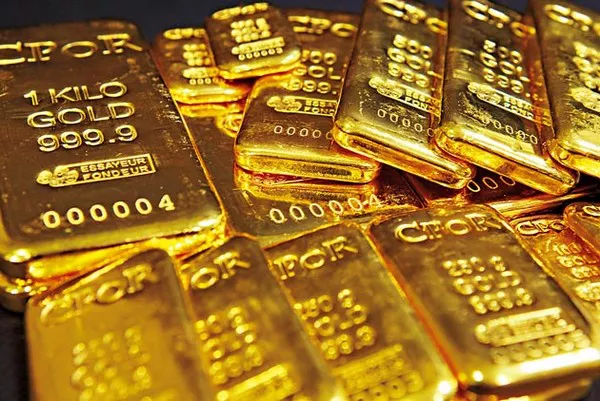Last week, platinum emerged as the top-performing precious metal, climbing 3.62% and pushing its year-to-date gains beyond 35%. Spot prices hovered near $1,226 per ounce, briefly reaching $1,300 on Thursday. Gold also demonstrated robust growth, rising about 30% over the same period. Analysts at Bank of America attribute platinum’s sharp rally not only to gold’s upward trend but also to a persistent supply deficit and strong demand, particularly from the jewelry sector.
Gold’s Growing Role in Global Reserves
Gold bullion now accounts for 20% of global reserves, surpassing the euro to become the world’s second-largest reserve asset. This milestone is largely driven by years of central bank acquisitions. Despite this, global gold holdings remain steady at around 35,000 tons—levels consistent since the Bretton Woods agreement—indicating potential for further accumulation. Meanwhile, major retailers like Chow Tai Fook have reported better-than-expected earnings with healthy profit margins, suggesting that rising gold prices have not dampened consumer demand. In fact, some retail buyers are motivated to purchase precisely because of the price increase.
Asia’s Growing Influence on Gold Futures
The launch of a gold-futures contract in Singapore has drawn attention to the rising activity across Asian financial centers, as interest in the precious metal intensifies. The BlackRock-backed Abaxx Exchange introduced a U.S. dollar-denominated contract sized at 1 kilogram (32.15 troy ounces), deliverable locally. This development will feature prominently at the upcoming Singapore Bullion Market Association conference, set to take place over three days starting Sunday.
Palladium Slumps as Speculative Pressure Mounts
In contrast, palladium was the weakest precious metal last week, falling 2.44%. Exchange-traded funds (ETFs) recorded a net sale of 601 ounces as of Wednesday but reversed to a net purchase of 1,914 ounces by Thursday. Despite this weekly decline, palladium has seen the strongest net buying activity among precious metals this year, up 7.5%, compared to gold’s 6.8%, silver’s 5.7%, and platinum’s 5.6%. This combination of heavy ETF interest alongside a weekly price drop suggests larger investors may be increasing speculative short positions. Additionally, palladium faces long-term risks from decarbonization trends impacting automotive demand.
Challenges in Diamond and Gold Mining Sectors
Petra Diamonds recently disclosed lower-than-expected sales results for combined Tender 5 & 6, falling short of BMO’s volume, product mix, and pricing estimates. The ongoing difficulties in the diamond market add pressure as Petra negotiates to refinance its debt obligations. Meanwhile, Hochschild Mining reported production setbacks at its Mara Rosa gold mine in Brazil due to heavy rains and contractor issues, with output limited to 25,000 ounces year-to-date. Bank of America anticipates that production guidance will be revised downward.
Gold Outlook: Consolidation Amid Economic Uncertainty
According to Kotak Securities, gold remains in a consolidation phase, with market attention focused on upcoming U.S. economic data that could influence the dollar and Federal Reserve policy. The firm projects that bullion prices may approach $4,000 per ounce early next year, supported by central bank purchases and geopolitical risks.
Citigroup advises investors to consider gold and select non-U.S. equities as portfolio hedges amid concerns over U.S. assets, including possible impacts from proposed tax reforms. Kate Moore, Citi Wealth’s chief investment officer, highlighted recent portfolio diversification moves adding gold alongside European and Chinese stocks.
Market veterans also weigh in: Paul Tudor Jones predicts a 10% dollar decline within the next year as short-term interest rates fall, a scenario highly bullish for gold following an 8% dollar drop in 2025 amid tariff disputes and shifting diplomatic ties. Meanwhile, Jeffrey Gundlach warns of yield curve risks driven by rising long-term yields as investors demand higher compensation for U.S. debt exposure and escalating interest expenses.
Mining Industry Pressures and Regional Policy Moves
Canaccord reports that Equinox’s pro forma 2025 guidance is down 11% from earlier estimates, while all-in sustaining costs have surged 23%. The production shortfall is mainly due to slower ramp-up at the Greenstone project, with cost increases linked to both Greenstone and Brazilian mines.
In East Africa, Tanzania plans to mandate large-scale miners to refine and trade at least 20% of their gold output domestically. The policy aims to leverage the bullion price rally and retain greater control over national resources.
On Friday, Mali announced plans to establish a state-controlled gold refinery in partnership with Russia’s Yadran, targeting a processing capacity of 200 metric tons. It remains unclear whether artisanal and international miners will be required to refine their gold within Mali under the new facility.


